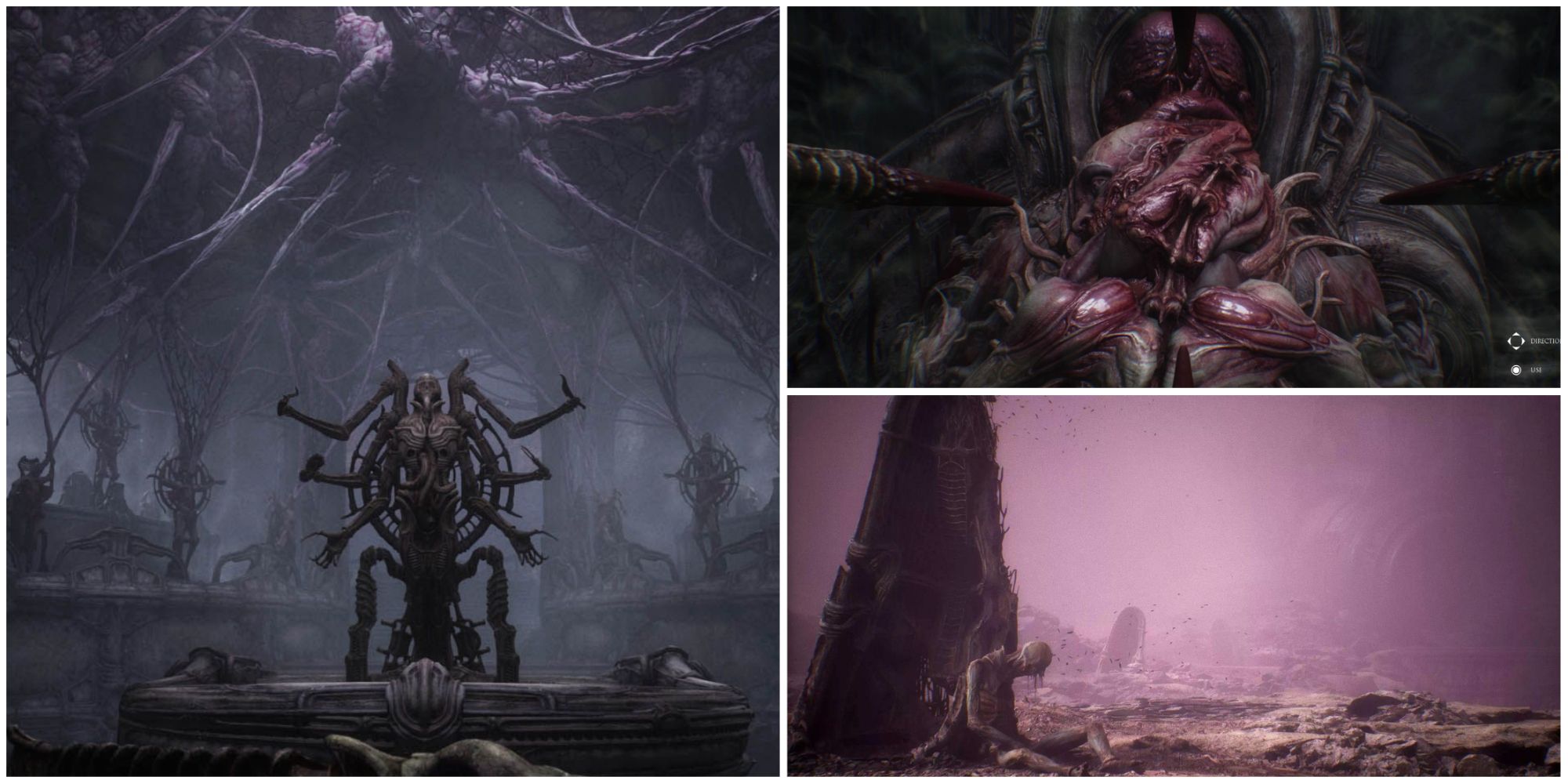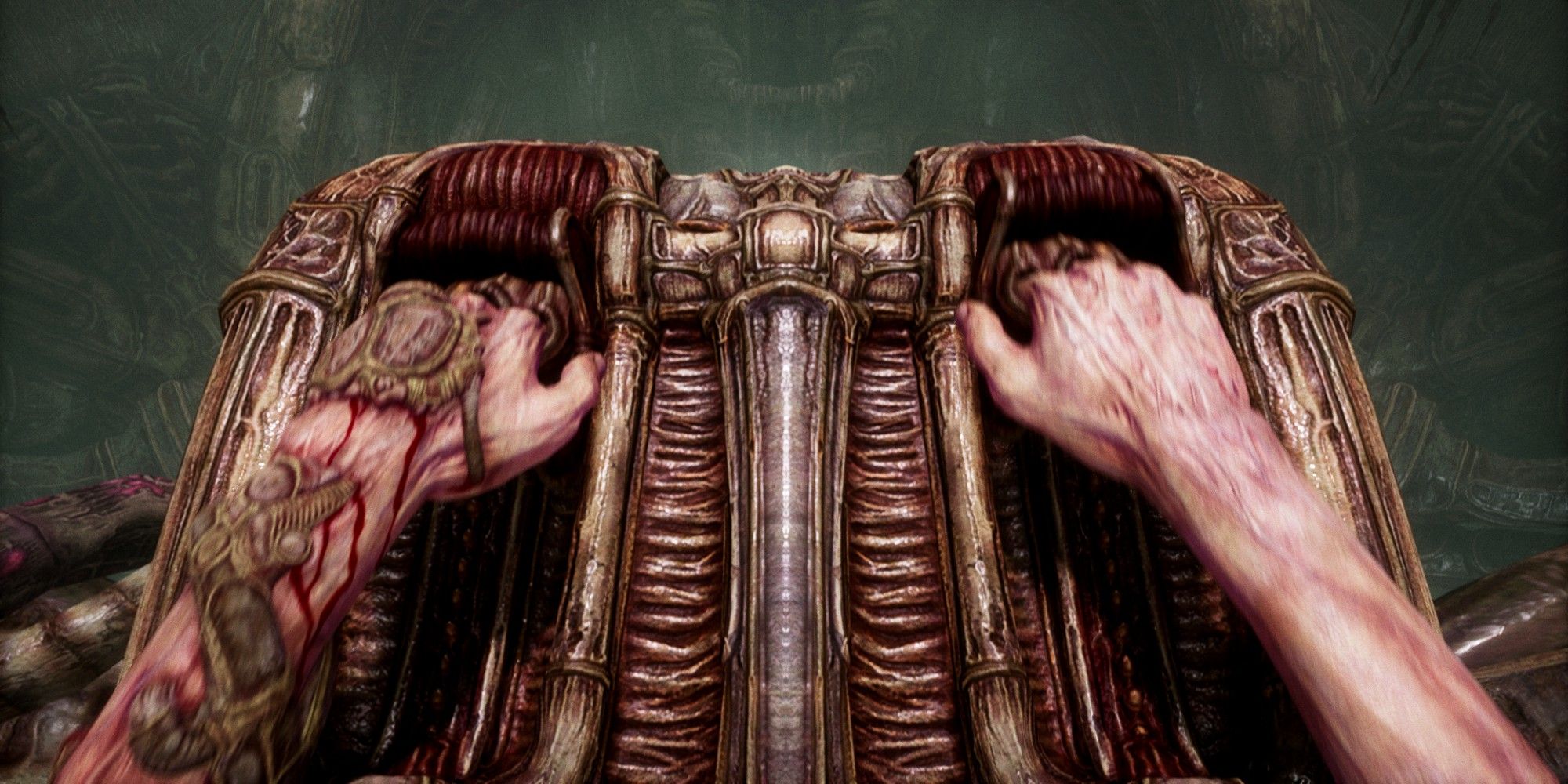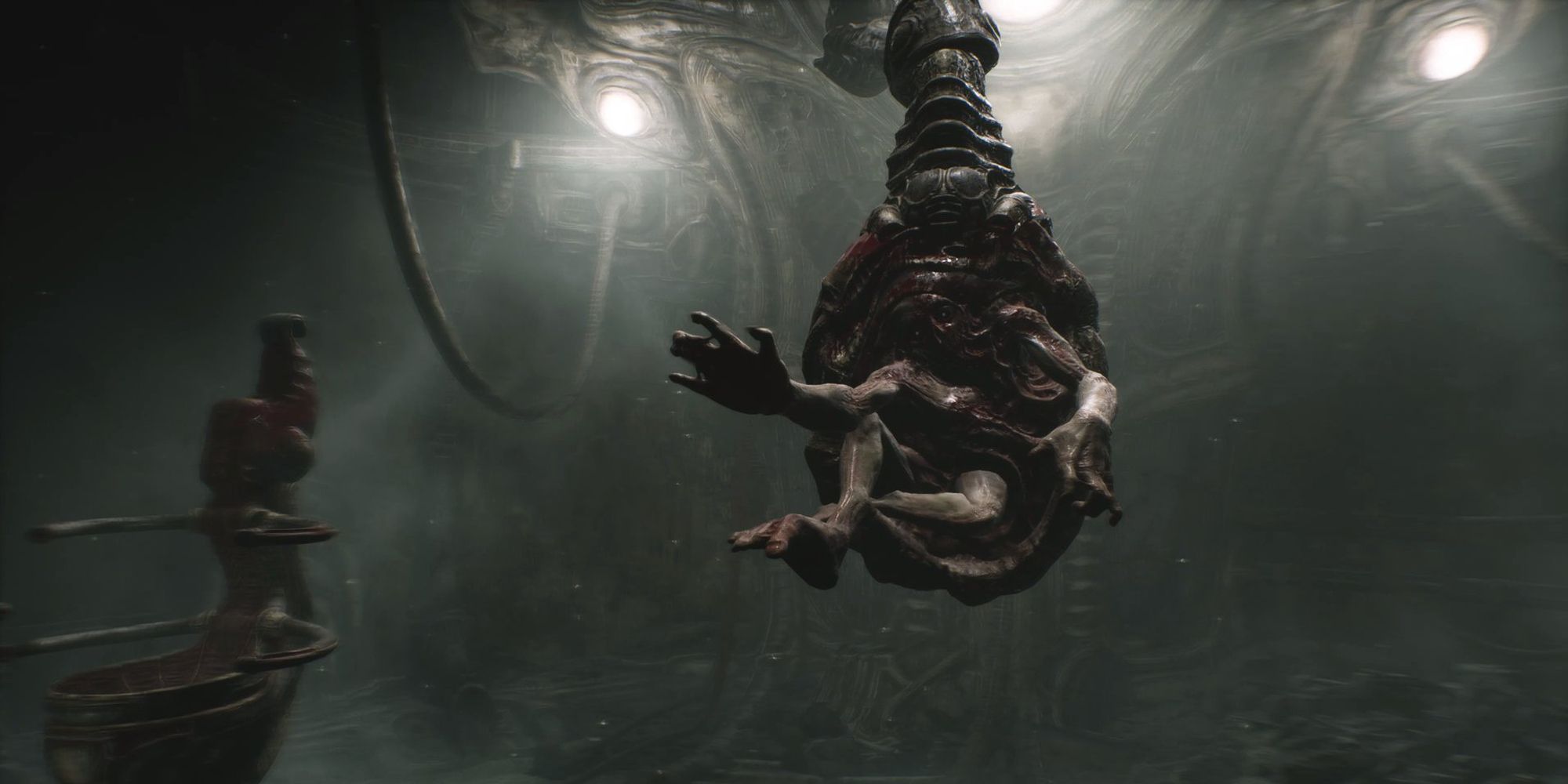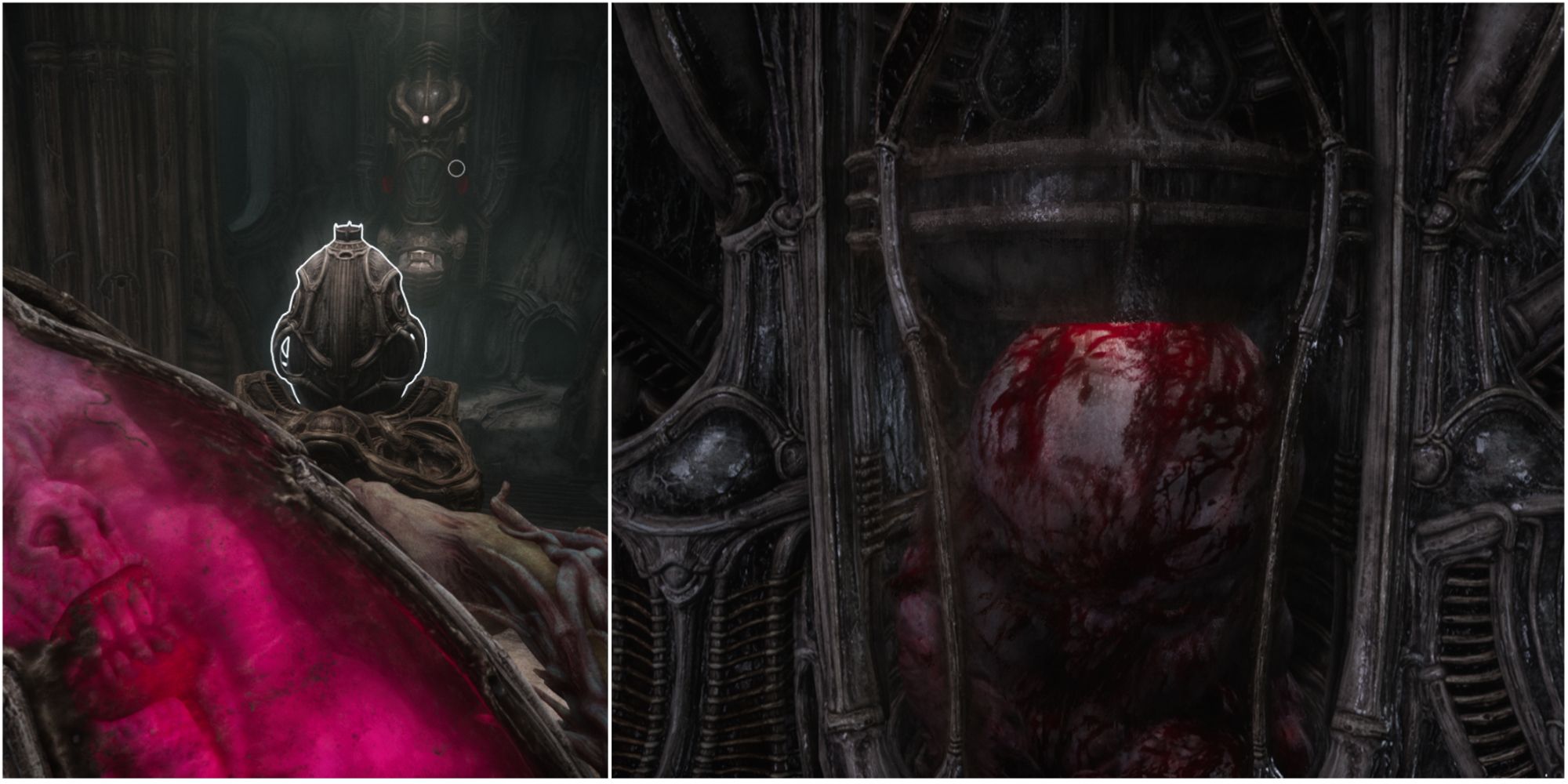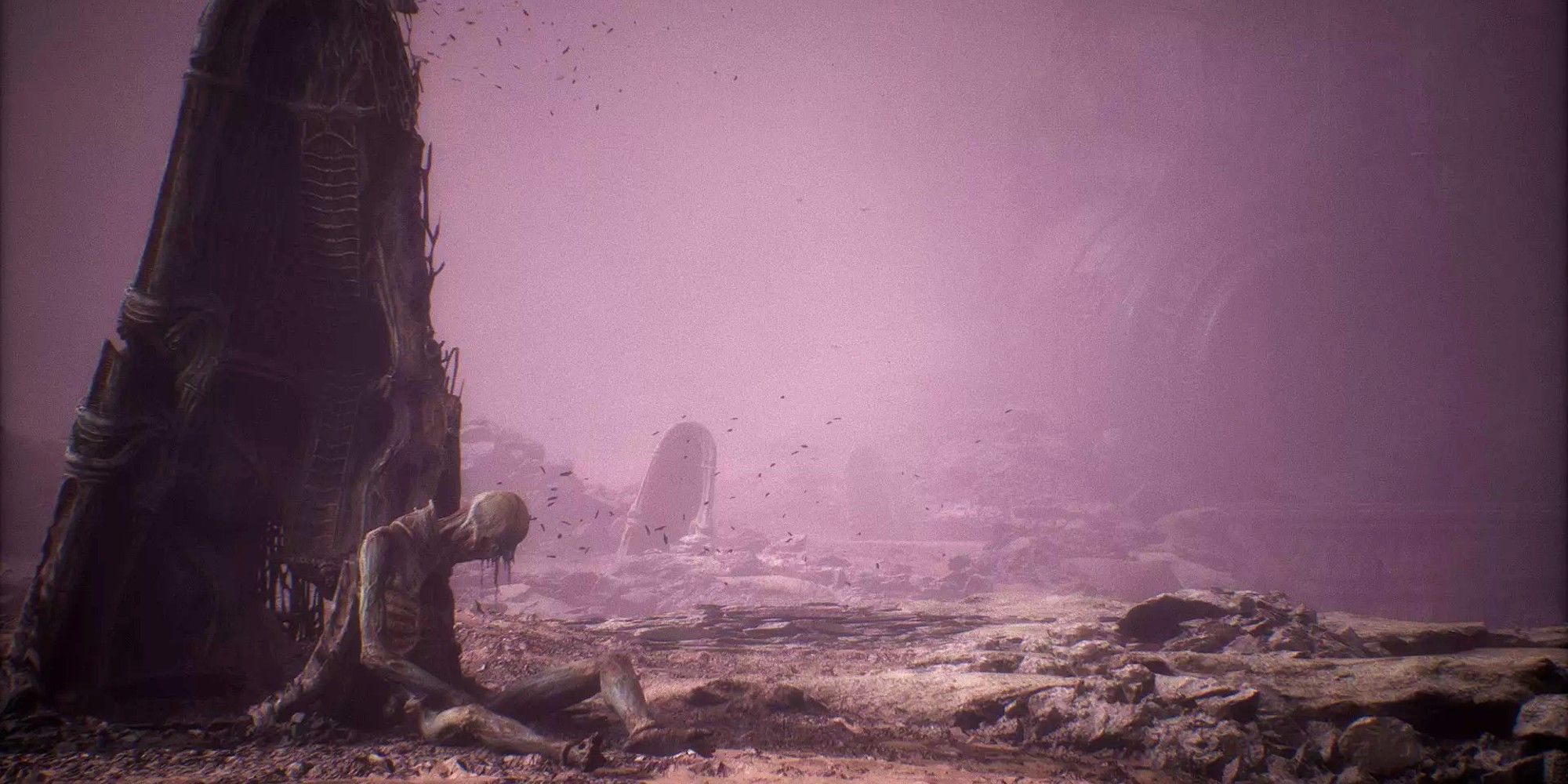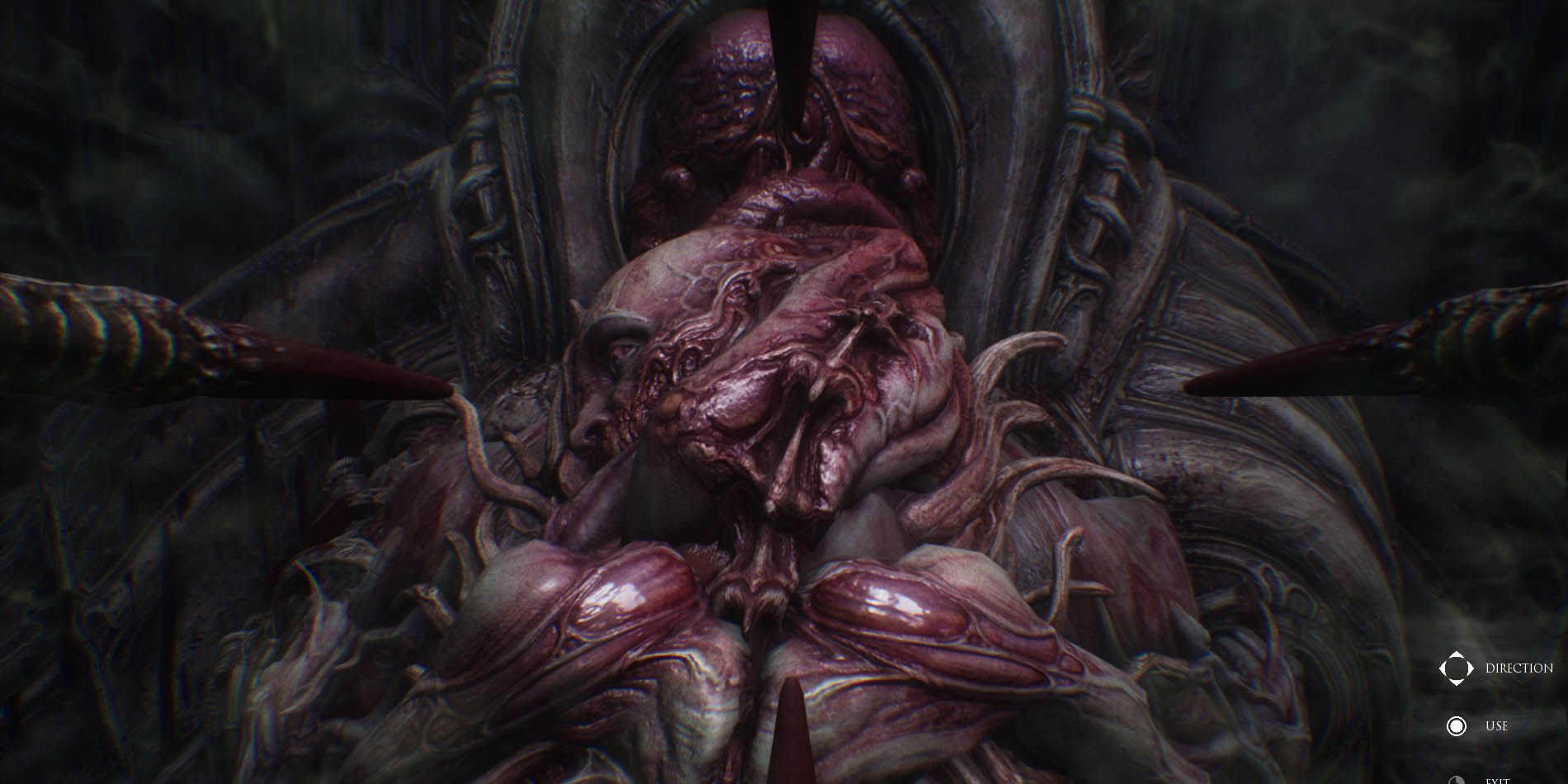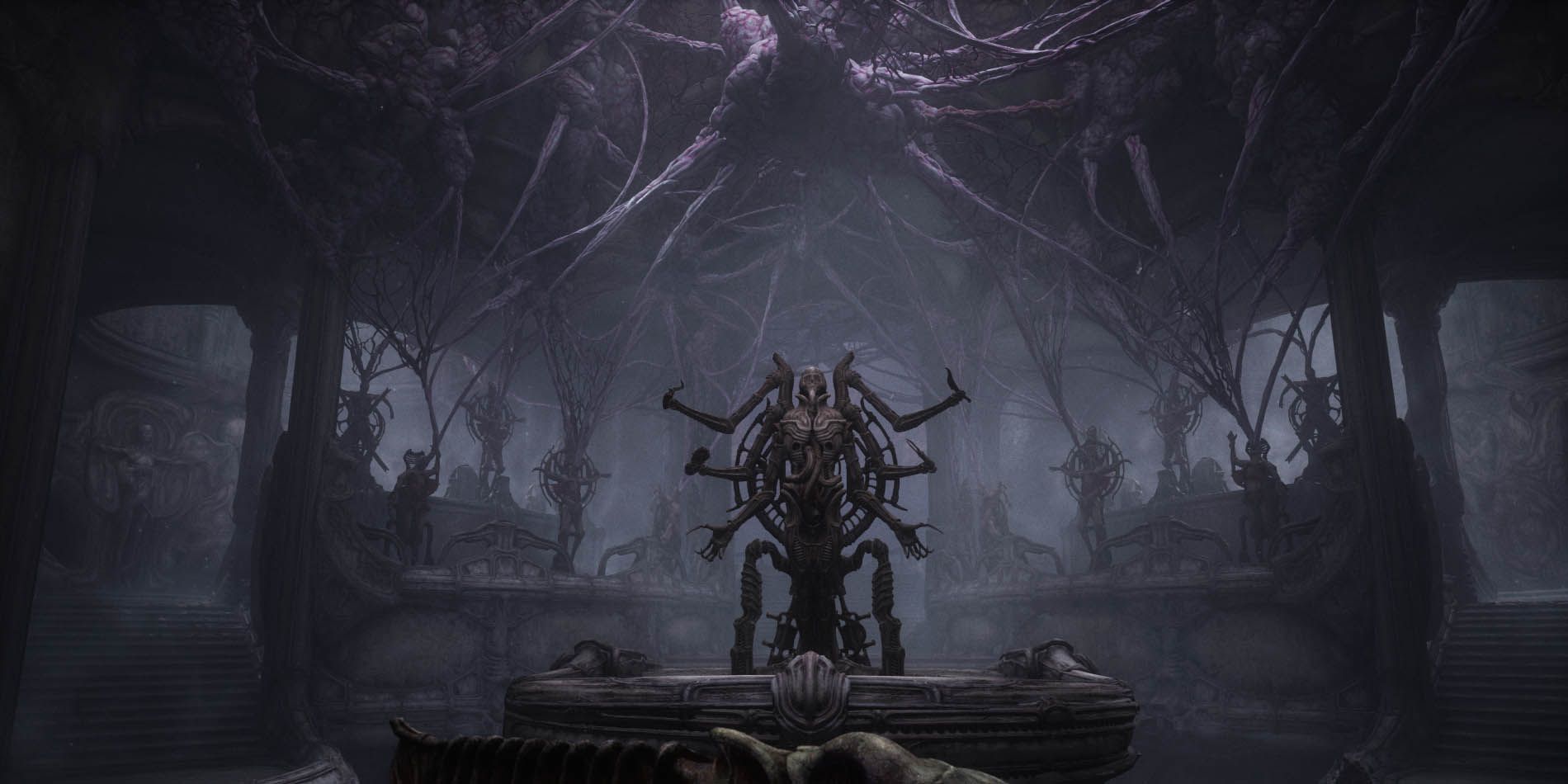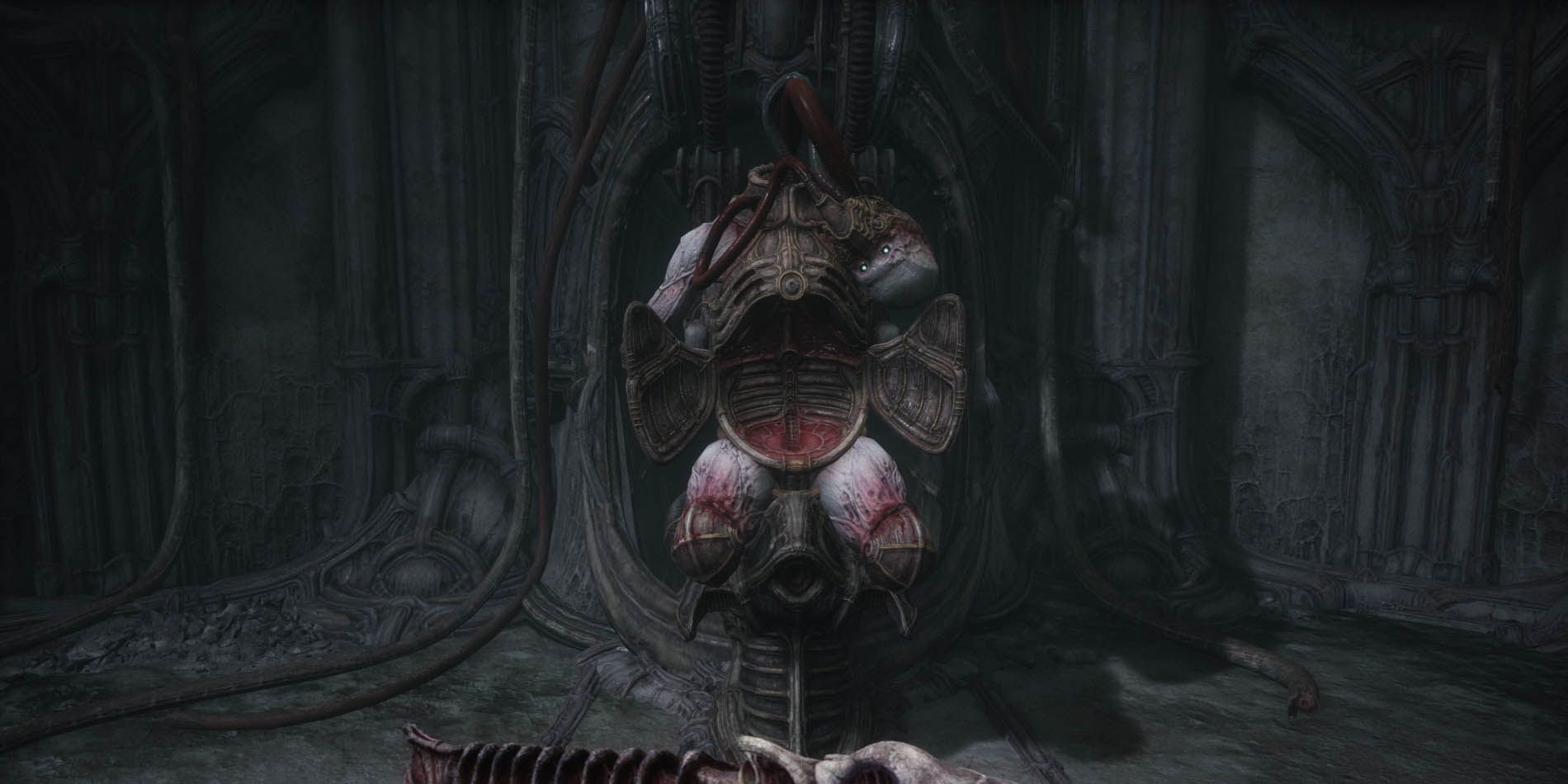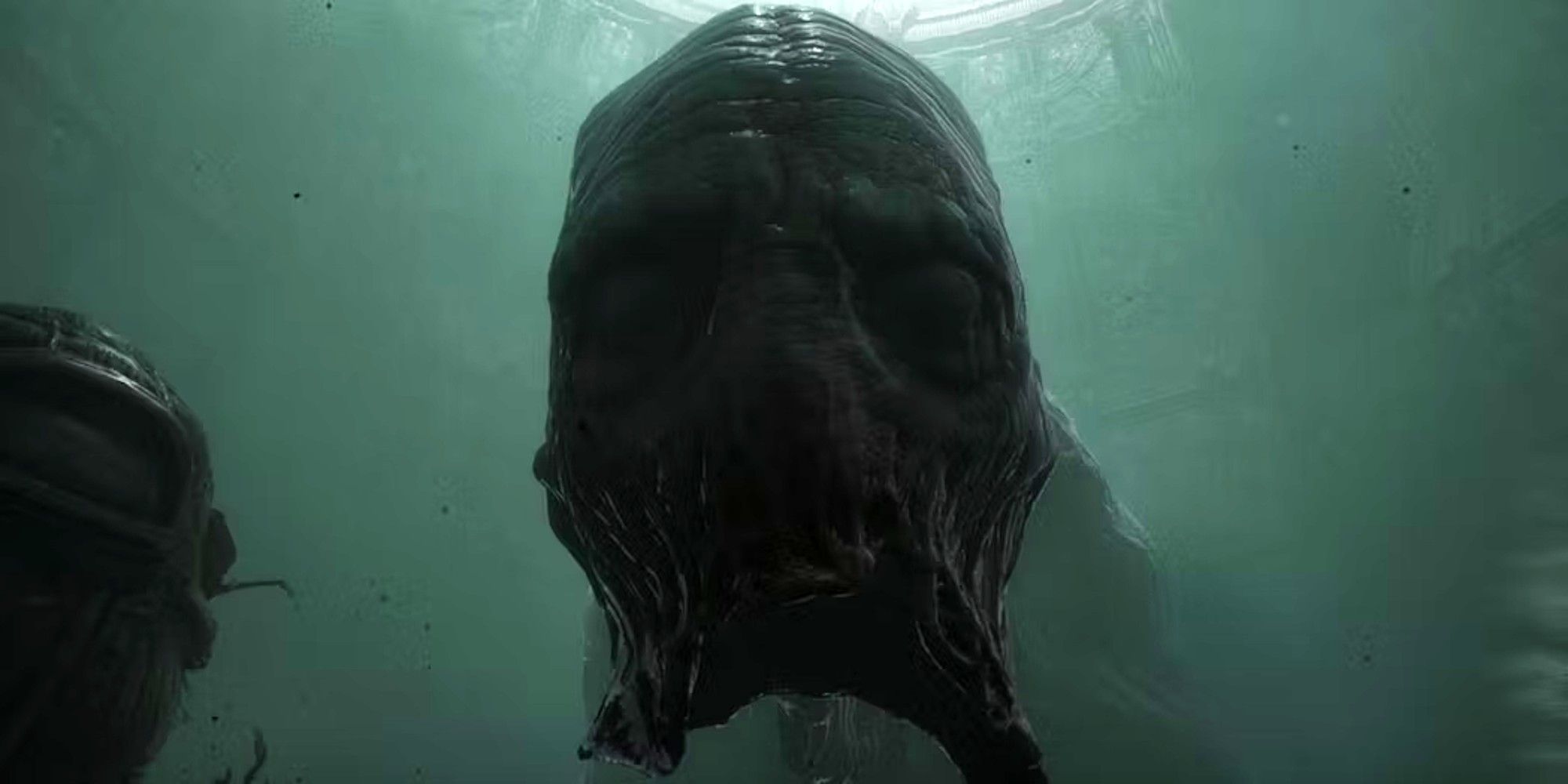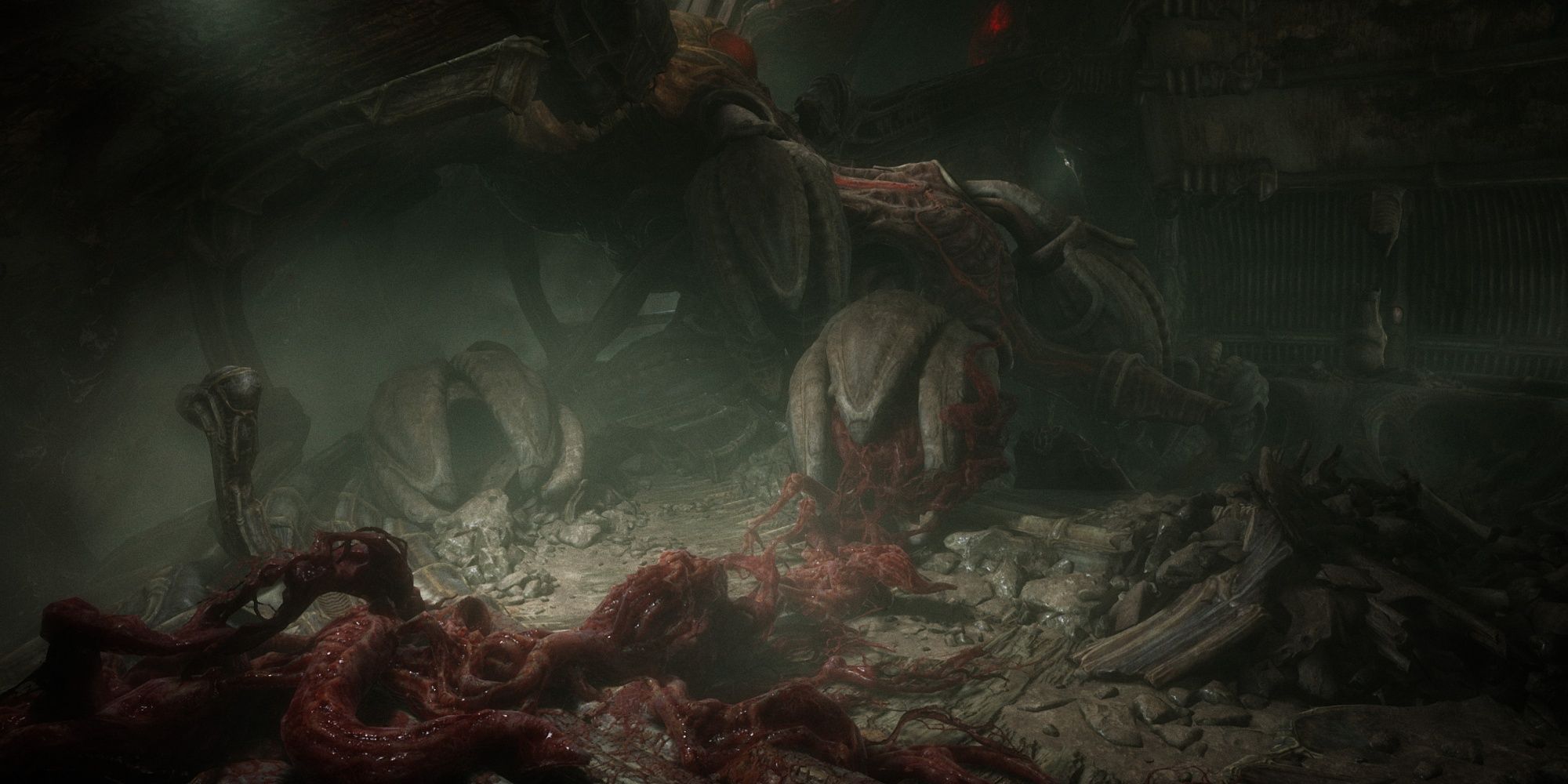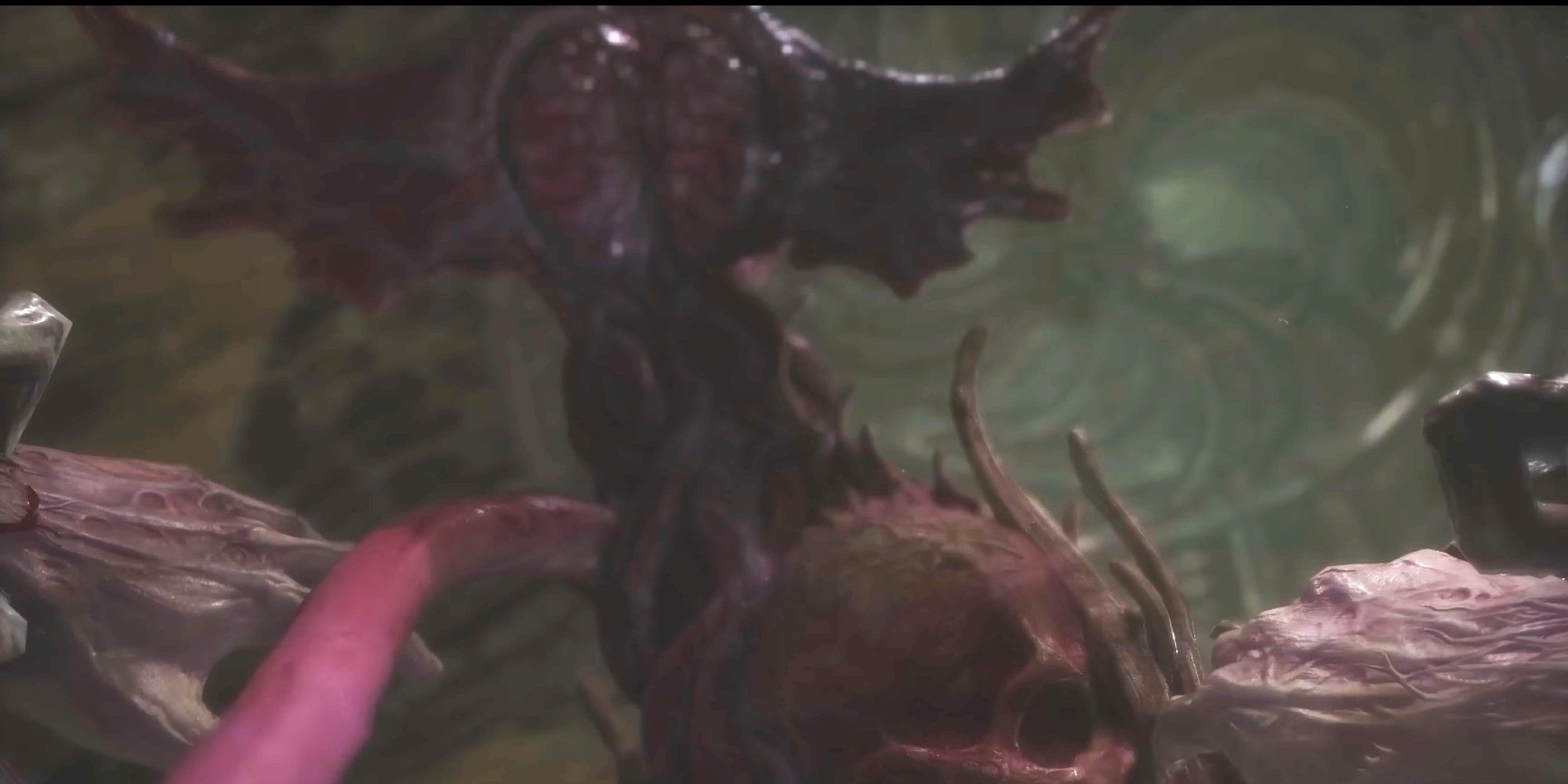Scorn’s official digital artbook is a comprehensive look into the game’s development through the lens of exploring its concept art over time. Over the span of 192 pages, the team behind the atmospheric horror title offers insights into the game’s unique visuals and talks about their admiration for H.R. Giger. They also give interesting information about the lore—but not enough to completely shed light on the game's cryptic narrative.
Moreover, the digital artbook also contains tons of cut content. Some of these concepts were clearly repurposed in the final game, while others didn’t make it into the released product. While the critical consensus for Scorn has been mixed, to say the least, after reading the art book it is hard not to feel that Scorn could have been a much better game if it was launched true to the developer’s original vision.
10 Environmental Context
Scorn makes a commendable effort to tell a dystopian story without one word of spoken dialogue. Instead, you’ll piece its narrative and themes as you wander through the ruined planet. And also, by sticking your hands knuckle deep into bizarre alien interfaces.
Fortunately, Scorn’s artbook has a detailed list of these machines’ context and exact functions. These organic machines were made in the image of the human body, with many of them conspicuously resembling sexual organs. Once you notice phallic and yonic imagery, you'll never unsee it.
9 The Role Of Moldmen
Scorn’s opening act begins in a factory called The Assembly, a recycling plant that repurposes living things. The Assembly is cohesively designed to efficiently birth, transport, slaughter, and recycle Moldmen's body parts at an industrial scale.
These cute and innocent Moldmen are packaged products uncomfortably squished together for the convenience of saving space. The poor conditions and handling are why these creatures are riddled with deformations and diseases. Moldmen lack any self-preservation instincts; like baby ducks, they follow anyone even if they intend to harm them.
8 War Of The Homunculi
Scorn’s artbook reveals that Ebb Software originally had bigger plans for the Homunculi. These synthetic experiments were highly-intelligent engineers who could build cyborgs from organic scrap and random junk. Because of their diminutive and distorted structure, they needed these machines to move and function.
The Homunculi had dangerous ambitions to take over Polis, the looming citadel at the end of the game. But two split factions arose and waged war against each other; one faction built cyborgs from bodies, while the other made militarized robotic exosuits. Unfortunately, our only encounter with these intelligent creatures in-game is juicing them inside a hydraulic press.
7 The Blasted Labyrinth
Due to Scorn’s ambitious scope, the team had to cut down some of its more unique ideas and levels. The first cut location is The Blasted Labyrinth, which was supposed to be a transitional area between The Crater and The Tower (another cut location).
The Blasted Labyrinth served as the battleground of the two warring homunculi factions. During the time of the game, the area would have been littered with thousands of decaying bodies and broken cyborgs. The remnants of a bitter war would have been painted Scorn’s lore in bloodshed and tragedy.
6 The Protagonist And The Parasite
Scorn's protagonist is a physical manifestation of three of their many themes: existence and interaction with the world, entropy and of bodies progressively worsening, and rebirth, both literally and figuratively. The parasite exists as a way to challenge these themes by taking away your control over your own body.
Despite that, the parasite and the protagonist are in a symbiotic relationship, allowing you to use weapons during the game. However, the trade-off is that the parasite becomes more powerful the longer it latches on to a body.
5 Shells And Transferring Consciousness
Scorn showcased the idea of collective consciousness in the game's last act. The artbook reveals that the team played around with the concept of transferring consciousness, both for the players and inhabitants of the world. Concept artist Filip Acovic wrote that he thought about how people playing the game can experience the world in different physical entities.
Entities could even crawl inside hollow shells to fuse their consciousness into empty bodies. The process would typically result in a kaleidoscopic, almost psychedelic burst of patterns and colors. The only remnant of this idea is switching between two humanoids to complete a barebones puzzle.
4 Automated Cyborgs
The Homunculi are largely responsible for creating the cyborgs in Scorn. In-game, these cyborgs have a carved-out hole in their torsos for the intelligent creatures to use to control the organic machine. Most cyborgs were intended to be self-operating machines, functioning independently without their creator's intervention.
Unlike most machines in Scorn's universe, cyborgs aren't mass-produced. The Homunculi built them from scavenged corpses, replacing missing limbs with weapons and firearms. It's cute and morbid to imagine the little engineers carrying bodies from the battlefield to build their organic mecha suits.
3 The Tower
The Tower is the second cut location from the game; it was supposed to be a towering reddish skyscraper right after venturing through the Blasted Labyrinth. Most notably, in the artbook the Tower is in almost pristine condition compared to its barren and harsh environment.
As expected from Scorn, the Tower unmistakably resembles a phallus. The Tower’s zenith imprisons a behemoth creature crying out in pain because it is endlessly expanding. The artbook mentions that players would have ground parts of the beast to progress through the area.
2 Erupted Creatures
The massive creature located at the top of Tower is forced to create offspring, much like the Crater Queen attached on the grand lift to Polis. The Tower’s behemoth is covered with a thick organic putty that was constantly fed into multiple grinders.
The putty is discarded into valves and pipes spread throughout the structure. However, this putty gathers and mutates into deformed creatures at the base of the pipes, curling like toothpaste and forming caricatures of suffering. Scorn’s artbook suggests they would have numbered as much as an army around the Tower.
1 Organic Weapons
Under the guns section of the artbook, Ebb Software considered ditching the use of all weapons stemming from the parasite. Instead, you could have installed a mechanical gun-arm that shoots from a barrel hidden behind the wrist. Filip Acovic says you could have used technology “to modify yourself and turn yourself into some sort of cyborg.”
What’s most interesting is that there was an unpursued plot idea to cut away the parasite. This would have been a great mechanic to get the protagonist involved in the story and maybe left the game feeling less like a walking simulator and more like a story you had some initiative in.

